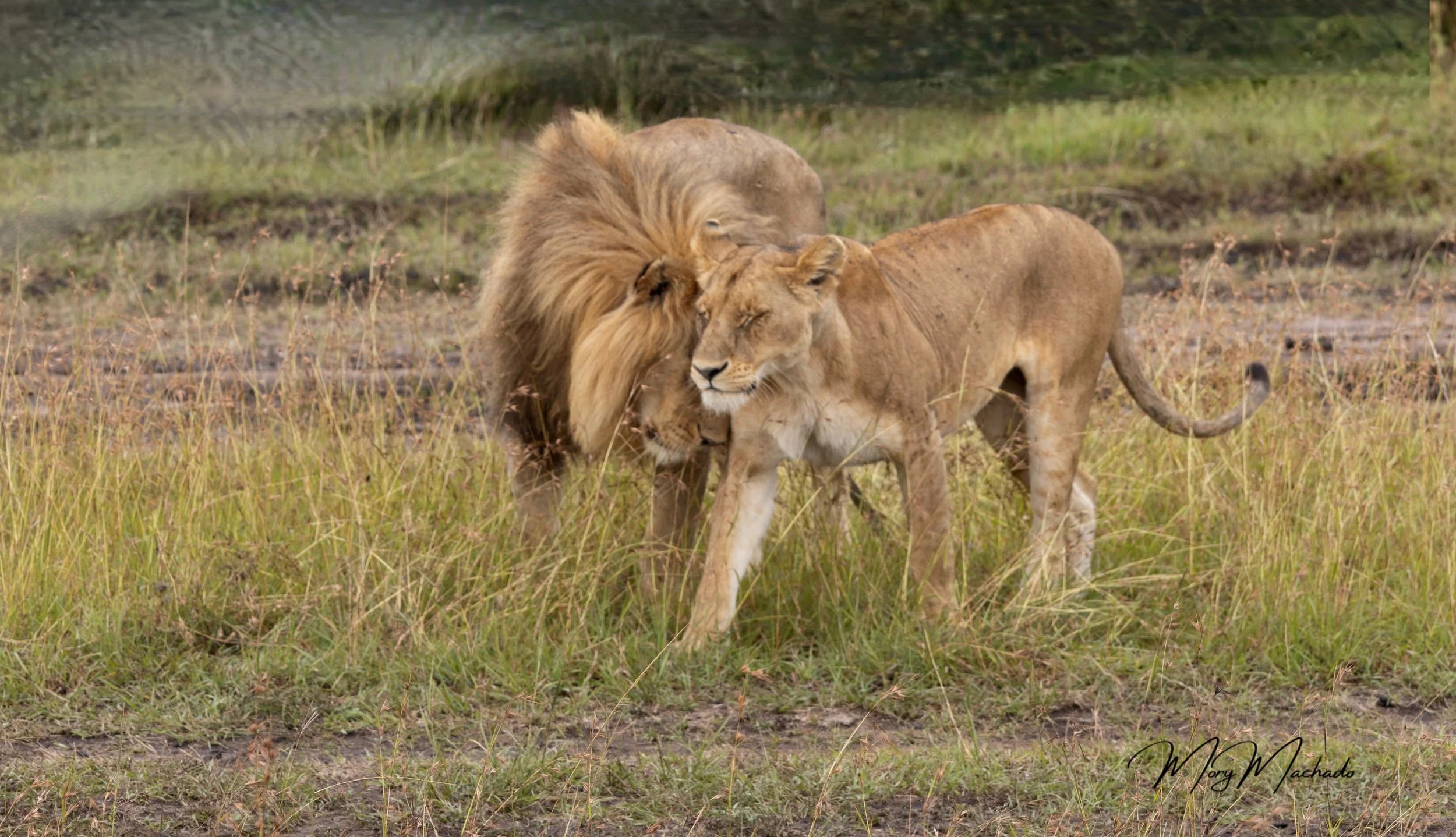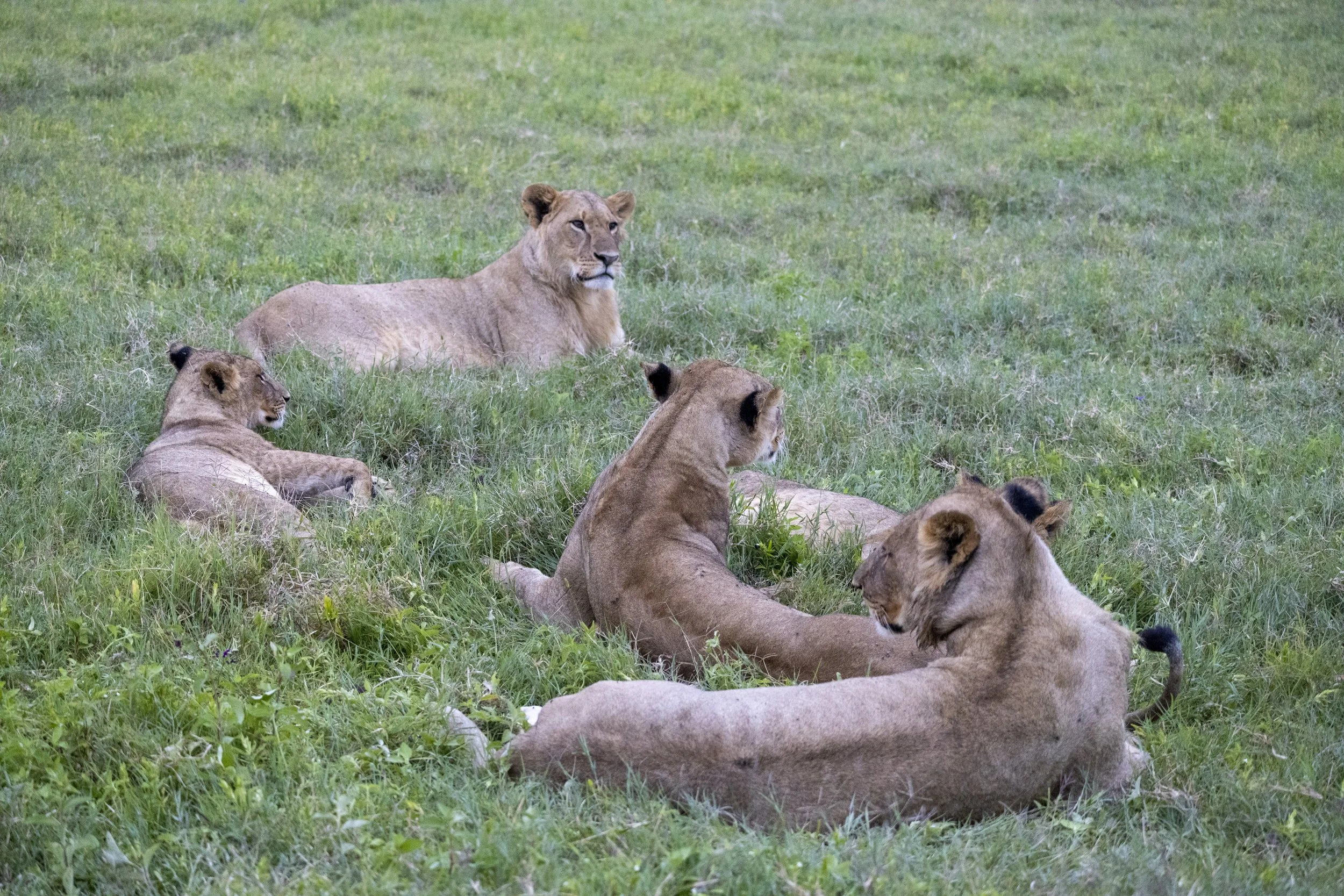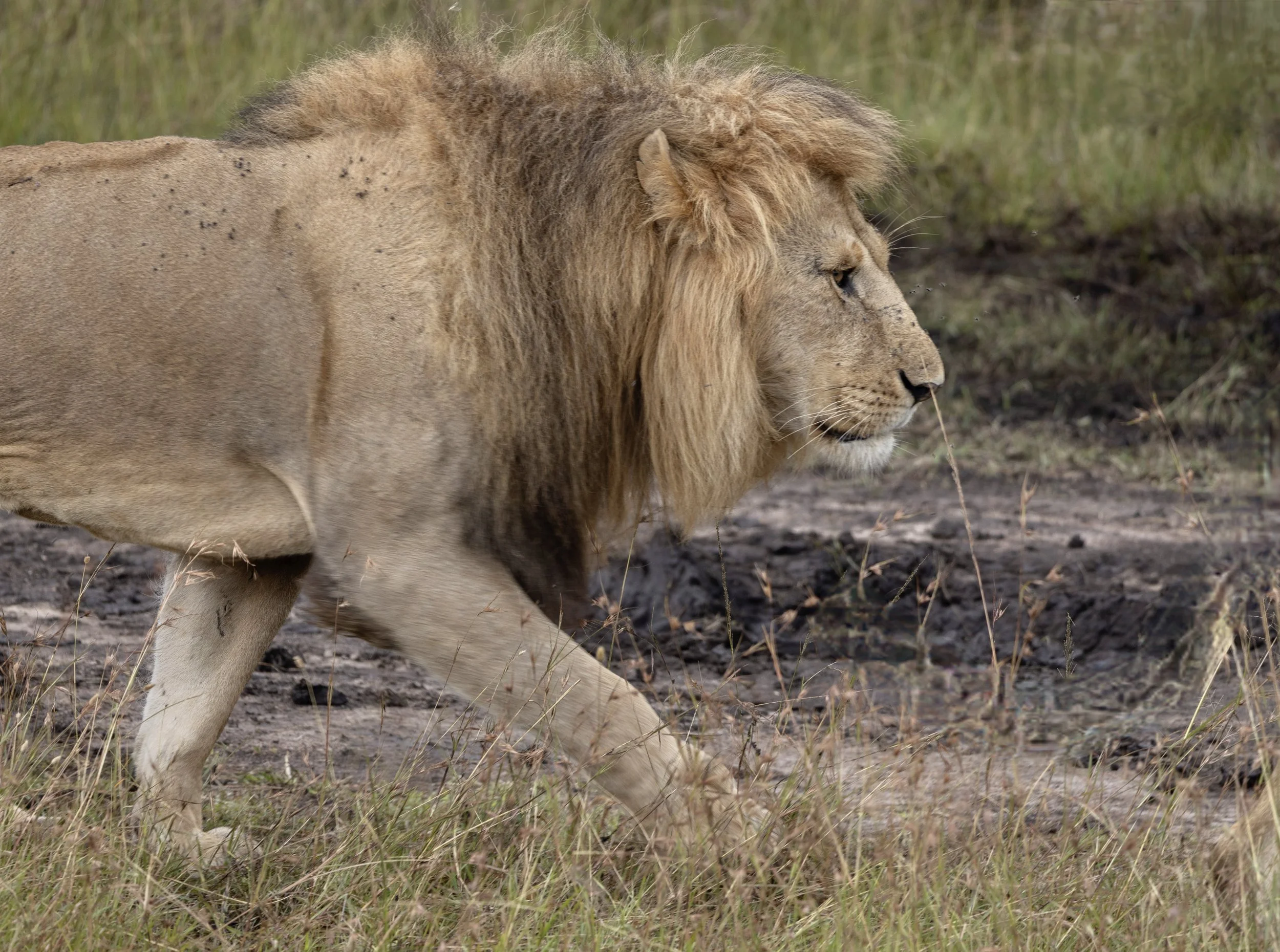Lions and their Prides
This 1st shot is my absolute favorite and was taken during my trip to Kenya.. I have named it Mufasa and Sarabi from "The Lion King" Their affection was palpable. During the trip we were lucky enough to encounter Lions several times, 4 in total throughout our 12 day journey. These are a series of pics from each of those times. You can tell the difference between a Lioness and a young male Lion by the slight fur growth on the side of the male's neck. Lions are the only cats that live in groups, called family prides, which comprise anywhere from two to 40 lions—including up to to three or four males, a dozen or so females, and their young.
The lion is a large cat native to Africa and India. It has a muscular body, round head, and a hairy tuft at the end of its tail. Adult male lions are larger than females and have a mane. Lions live in social groups called prides, consisting of adult males, related females, and cubs. Female lions hunt together, mainly targeting large ungulates. While lions may scavenge and occasionally hunt humans, they generally do not actively seek out humans as prey.
Lions inhabit grasslands, savannahs, and shrublands. They are primarily active during the day but can adapt to nocturnal activity when threatened. Historically, lions were found throughout Africa and Eurasia, but now they have fragmented populations in sub-Saharan Africa and one population in western India. The lion is listed as Vulnerable on the IUCN Red List due to a significant decline in African populations, primarily caused by habitat loss and human conflicts.
The lion holds great cultural significance and is widely depicted in art, flags, and literature. They have been kept in menageries since ancient times and have been sought after for exhibition in zoos since the 18th century. Lions were prominently depicted in Ancient Egypt and in various ancient and medieval cultures across their historical and current range.














